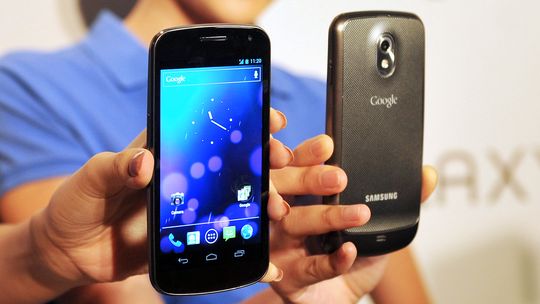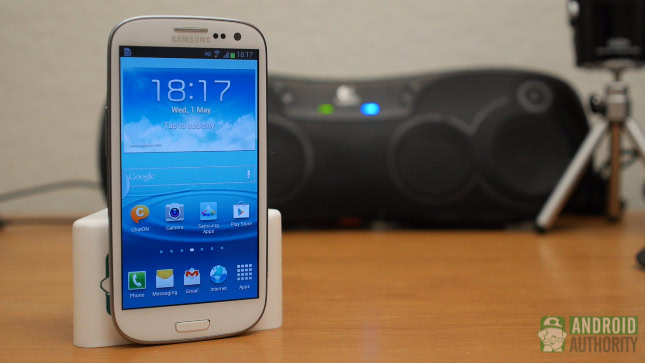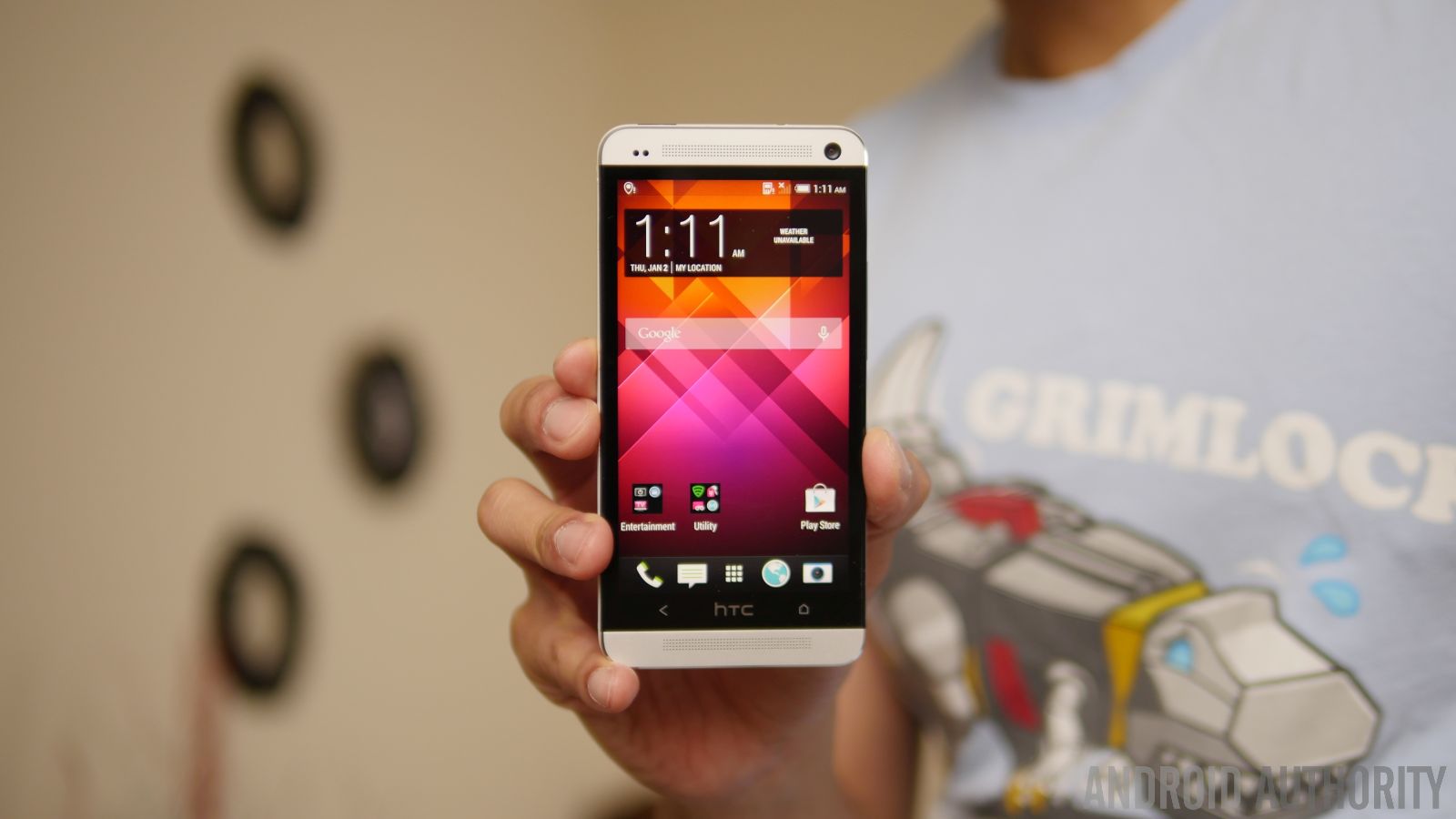As 2019 comes to a close, we take our leave of the 2010s and enter into the 2020s. This is the first full decade that Android phones have been around, as the first Android phone didn’t pop up until 2008. As such, we thought we’d take a look back at the best Android phones of the decade, from the beginning of 2010 to the end of 2019.
Below, we’ve picked the best smartphone from each year. Additionally, we also threw in some honorable mentions, as for some years it was very difficult to choose just one.
Without further ado, here are the best Android phones of the decade!

The HTC Nexus One wasn’t the first Android phone, but it was the first Nexus phone. It also was the first phone that Google sold in the then-unconventional manner of focusing on online direct sales of unlocked units, rather than relying on carriers. It also shipped with an easily unlockable bootloader, which made it a huge hit within the custom ROM community.
Related: Ghosts of Nexus past: Nexus 5 vs Nexus 4 vs Galaxy Nexus vs Nexus S vs Nexus One
This is the only phone on this list with a trackball, a now long-gone smartphone feature. Although you didn’t need to use the trackball to navigate through the phone’s applications, it probably made people used to BlackBerry devices feel more comfortable about switching to Android. Keep in mind that the Android operating system was less than two years old at the time the HTC Nexus One launched.
When you took the Nexus One out of the box, it was pre-loaded with Android 2.1 Eclair, but eventually got upgrades all the way through Android 2.3.6 Gingerbread. Google abandoned supporting the Nexus One shortly thereafter, but that unlockable bootloader kept the device alive in the ROM community for a long time.
HTC Nexus One specs:
Honorable mentions: The HTC Evo 4G was a very popular smartphone model in 2010, but we decided against making it one of the best Android phones of the decade due to its abysmal battery life, even for 2010. That device is especially notable, though, due to it being the first 4G-capable phone launched in the United States. Another popular phone was the Motorola Droid X, which many reviews called the first Android phone to truly be a threat to the iPhone.

2011 was the first year Samsung made a huge splash in the Android world. The company pushed out the Samsung Galaxy S2 that year, but its launch was incredibly confusing due to each of the four major wireless carriers in the US getting slightly different models with even slightly different names. It was even more confusing throughout the rest of the world.
It wasn’t until the very end of the year when Samsung finally got it right. Partnering with Google, the two companies co-released the Galaxy Nexus. Since it had the Nexus branding, the device was a top priority for Google and the launch of Android updates. In fact, the Galaxy Nexus was the first device with Android 4.0 Ice Cream Sandwich.
Related: Galaxy Nexus gets Android 7.1 Nougat in 2016 thanks to unofficial ROM
As with the Nexus One from 2010, the Galaxy Nexus had an easily unlockable bootloader, which made it a prime choice for the custom ROM community. It also featured a unique curved display which gave it a very premium feel and is the first phone on this list to feature a selfie camera.
The device received universal acclaim upon its release, with many reviews citing it as the first truly great Android smartphone. That is debatable, but one thing is for certain: it is one of the best Android phones of the decade.
Galaxy Nexus specs:
Honorable mentions: Elsewhere in 2011, we also had the HTC ThunderBolt, which was the first device to support making phone calls and using data at the same time. We take this for granted now, but it was a big deal back then. There also was the previously mentioned Samsung Galaxy S2 lineup, which were all great phones. But Samsung’s weird strategy of releasing different ones for each carrier was a bad move. Luckily, the company smartened up in 2012.

This was an absolutely bonkers year for Samsung. Although the original Samsung Galaxy S had done exceptionally well and the Galaxy S2 fared even better, the Samsung Galaxy S3 was the device that shot Samsung to the top of the Android world.
Related: Samsung Galaxy S3: 7 years later, its iPhone-bashing commercial still works
The Samsung Galaxy S3 was the second-best-selling phone of 2012 (right behind the Apple iPhone 5) and would eventually go on to be the best-selling Android phone of all time with over 70 million units sold.
The Galaxy S3 was about the same size as the 2011 Galaxy Nexus, but featured a physical home button and removed the curved glass design. It featured a best-in-class camera system, top-of-the-line specs, and durable construction with an easily removable back panel (hello, swappable battery!). For many people around the world, the Galaxy S3 was — and possibly still is — the perfect Android phone.
Samsung Galaxy S3 specs:
Honorable mentions: Samsung wasn’t content to launch just one game-changing phone in 2012. Although it isn’t one of the best Android phones of the decade, the Samsung Galaxy Note 2 was a monster when it came to specs and features — and physical size. Today, its 5.5-inch display would be considered small, funnily enough. HTC also pushed out a terrific phone in the HTC One X, which featured one of the best displays on the market at the time, as well as a terrific, premium design. However, it was the following year when HTC really took us for a ride.

If someone makes a list of the best phones of all time, it’s a safe bet that the HTC One will be on the list, either this M7 model or the M8 model that followed in 2014. No matter how you look at it, the HTC One set the standard for what a premium Android smartphone could be.
Related: The HTC One M7 reminds us that HTC once stood for quality
Honestly, where do you even begin with this phone? The unbelievable all-metal construction? The powerful, crisp-sounding dual front-facing speakers? The great camera using Ultrapixel technology? The 1080p display? The list goes on and on. All an Android fan would need to do was hold an HTC One to know that it was truly terrific.
Unfortunately, HTC started to nosedive only a year or two after this phone launched, to the point where today it barely releases smartphones at all. But we’ll always hold HTC in high regard for the One and its game-changing effect on the smartphone industry.
HTC One (M7) specs:
Honorable mentions: Motorola, unfortunately, doesn’t have a device that makes this list of the best Android phones of the decade, but the Motorola Moto X is probably the device that would have been it. The customizable phone (assembled in the US!) was truly innovative for its time, despite the fact that the specs and hardware itself were of a low tier. Elsewhere, the LG Nexus 5 was an interesting phone. It had the Nexus branding, which is always good, but its construction and specs were pretty weak. However, the device only cost $350, which, even for 2013, was pretty low.

Honestly, no matter which phone we picked for 2014 it would be seen as a controversial decision. How do you even choose the best Android phone for 2014 when you have so many legendary choices? We had to toss aside the Samsung Galaxy S5, the HTC One (M8), the Google Nexus 6, the LG G3, and on and on.
Ultimately, we picked the OnePlus One as one of the best Android phones of the decade because it was an industry disruptor and truly did signify the “Flagship Killer” moniker OnePlus adopted. For less than $300, you got an Android smartphone that looked great, had powerful specs, and even came pre-loaded with one of the most popular custom Android ROMs of all time, Cyanogen.
Related: From OnePlus 6T to OnePlus One: A week with a five-year-old phone
Of course, the problem with the OnePlus One was you needed to fight tooth-and-nail to get one. The much-loathed invite system prevented just anyone from buying the device, and it even resulted in a “black market” of sorts in which you could buy and sell invites and make tidy profits. Still, if you got one it was worth it, as the OnePlus One is one of the most beloved phones ever released. To this day, there are still people who use it as their daily driver and it even (unofficially) supports Android 9 Pie!
OnePlus One specs:
Honorable mentions: We actually needed to make an entirely separate post just to go over all the amazing Android phones launched in 2014, which you can read here. We will highlight two notables though, starting with the Sony Xperia Z3 Compact. As Android smartphones started getting larger in size, the Z3 Compact was one of the few phones you could get that was small in the hand but still fully powered with modern specs. We also want to point out the Motorola Moto G, which set the benchmark for budget devices. The Moto G line is Motorola’s most successful family of phones, so clearly it was on to something.

OK, OK…we will fully admit that the Huawei-made Google Nexus 6P has a bit of a tainted history now with its well-documented bootloop errors. However, if you ignore that problem, you’re left with not only the best Nexus-branded phone, but one of the best Android phones of the decade.
Related: Google tried to recreate a DSLR photo with a Nexus 6P — and it worked
Dual front-facing speakers? Check. Powerful processor? Check. Great camera? Check. Stunning, beautiful design? Check. The Google Nexus 6P checked off nearly every box an Android fan could want and still kept the price at under $500.
Unfortunately, this would end up being the final entry in Google’s long-running Nexus series. After the Nexus 6P, Google moved on to the Pixel series with the 2016 launch of the original Google Pixel. It’s sad that the Nexus series came to an end, but at least it went out with a solid bang in the Nexus 6P.
Google Nexus 6P specs:
Honorable mentions: In 2015, we also really liked the third-generation Motorola Moto X. Sure, the Nexus 6P was cheap by flagship standards, but the Moto X was even cheaper, although it did cut down on some specs to get there. We also loved the LG V10, the first entry in LG’s long-running V series that ups the ante on the specs and designs of the flagship G series. You just needed to get used to those rear-mounted buttons.

The Samsung Galaxy S7 and S7 Edge came at an interesting time for Samsung. Between the Galaxy S3 and the Galaxy S7, things changed significantly in the world of Android. Although Samsung was still top dog, its reign was by no means assured as other players such as Huawei and Xiaomi started hacking away at its market share.
Related: Samsung Galaxy S7 sales cross 55 million units
The Galaxy S7 and S7 Edge, in a way, were the last of the “old” Samsung. They were the last to feature the familiar home button (even if it was only capacitive here) and the last to feature the distinctive body design of the Galaxy S family up until this point. They were also the last to sell in incredibly high numbers — since the launch of the Galaxy S7 family, Samsung has sold fewer and fewer Galaxy phones with each passing year.
Even if you ignore all that significance and history, the Galaxy S7 and S7 Edge were some of the best phones from S
31/12/2019 05:00 PM
31/12/2019 01:10 PM
31/12/2019 09:11 PM
31/12/2019 11:42 AM
31/12/2019 10:06 AM
31/12/2019 06:41 AM
31/12/2019 10:00 PM
31/12/2019 03:31 PM
31/12/2019 06:00 PM
2014 © Canadian apps and news